-
 Bitcoin
Bitcoin $105,515.7682
-0.75% -
 Ethereum
Ethereum $2,550.8526
-3.88% -
 Tether USDt
Tether USDt $1.0004
0.02% -
 XRP
XRP $2.1386
-2.78% -
 BNB
BNB $653.0175
-0.31% -
 Solana
Solana $146.9461
-4.05% -
 USDC
USDC $0.9998
0.02% -
 Dogecoin
Dogecoin $0.1782
-2.00% -
 TRON
TRON $0.2708
-0.25% -
 Cardano
Cardano $0.6369
-3.90% -
 Hyperliquid
Hyperliquid $41.2211
0.21% -
 Sui
Sui $3.0463
-5.78% -
 Bitcoin Cash
Bitcoin Cash $438.0762
2.18% -
 Chainlink
Chainlink $13.2264
-5.73% -
 UNUS SED LEO
UNUS SED LEO $8.9649
0.98% -
 Stellar
Stellar $0.2593
-3.86% -
 Avalanche
Avalanche $19.1916
-5.96% -
 Toncoin
Toncoin $3.0052
-3.20% -
 Shiba Inu
Shiba Inu $0.0...01203
-1.86% -
 Hedera
Hedera $0.1572
-4.58% -
 Litecoin
Litecoin $85.5869
-1.34% -
 Polkadot
Polkadot $3.8083
-3.62% -
 Ethena USDe
Ethena USDe $1.0003
-0.02% -
 Monero
Monero $307.3843
-3.36% -
 Dai
Dai $0.9998
-0.02% -
 Bitget Token
Bitget Token $4.5079
-2.03% -
 Uniswap
Uniswap $7.4836
-2.67% -
 Pepe
Pepe $0.0...01116
-3.77% -
 Aave
Aave $282.2684
-3.42% -
 Pi
Pi $0.5680
-7.78%
Which one is more important, the trend line break or the moving average dead cross?
Trend line breaks signal quick trend changes, while moving average dead crosses offer reliable confirmation, making both crucial for crypto trading strategies.
Jun 09, 2025 at 06:56 am
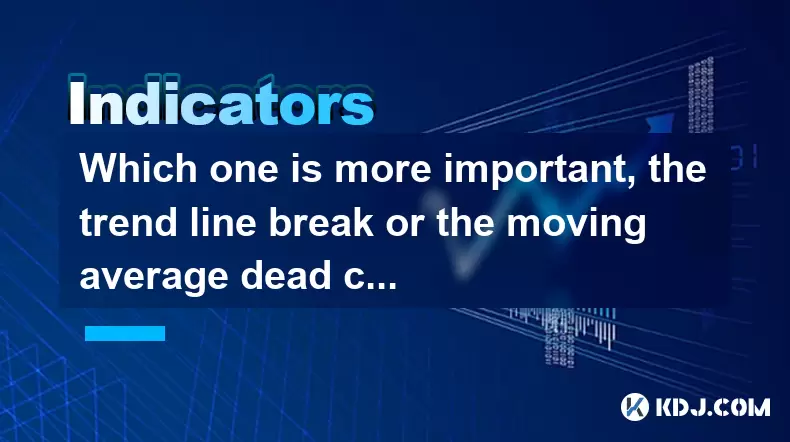
In the world of cryptocurrency trading, understanding technical indicators is crucial for making informed decisions. Two commonly used indicators are trend line breaks and moving average dead crosses. Both indicators signal potential changes in market direction, but they differ in their construction and implications. This article will explore which one is more important, providing detailed insights into how each works and their significance in the cryptocurrency market.
Understanding Trend Line Breaks
A trend line break occurs when the price of a cryptocurrency moves through a previously established trend line. Trend lines are drawn on charts to connect significant highs or lows, creating a visual representation of the market's direction. When the price breaks through these lines, it suggests a potential shift in the trend.
To identify a trend line break, traders follow these steps:
- Select a Time Frame: Choose the time frame you are analyzing, whether it's short-term (like 1-hour charts) or long-term (like daily charts).
- Draw the Trend Line: Connect at least two significant highs or lows to form the trend line. For an uptrend, connect the lows; for a downtrend, connect the highs.
- Monitor Price Action: Watch for the price to move beyond the trend line. A break is confirmed when the price closes outside the trend line and continues in the new direction.
A trend line break is significant because it often precedes major price movements. Traders use this indicator to adjust their positions, either entering new trades in the direction of the break or exiting existing trades to avoid potential losses.
Understanding Moving Average Dead Crosses
A moving average dead cross occurs when a short-term moving average crosses below a long-term moving average. This indicator is part of the broader category of moving average crossovers and is often used to signal a bearish trend.
To identify a moving average dead cross, traders follow these steps:
- Select Moving Averages: Choose two moving averages, typically the 50-day and 200-day moving averages for longer-term trends, or the 9-day and 21-day moving averages for shorter-term trends.
- Plot the Moving Averages: Add the selected moving averages to your chart.
- Watch for the Cross: A dead cross is confirmed when the shorter-term moving average crosses below the longer-term moving average.
A moving average dead cross is significant because it suggests that the short-term momentum is weakening relative to the long-term trend, indicating potential bearish conditions. Traders use this signal to consider selling or shorting assets, anticipating further price declines.
Comparing Trend Line Breaks and Moving Average Dead Crosses
Both trend line breaks and moving average dead crosses are important indicators, but they serve different purposes and have different implications.
- Sensitivity and Timeliness: Trend line breaks tend to be more sensitive and can signal a change in trend more quickly than moving average dead crosses. This makes them useful for traders who want to react swiftly to market changes.
- Confirmation and Reliability: Moving average dead crosses, on the other hand, provide a more reliable confirmation of a trend change because they are based on smoothed data over time. This makes them suitable for traders who prefer a more conservative approach and want to avoid false signals.
Using Both Indicators Together
Many traders find value in using both trend line breaks and moving average dead crosses in conjunction with each other. By combining these indicators, traders can gain a more comprehensive view of the market.
- Confirmation Strategy: A trend line break can be used to initiate a trade, with a moving average dead cross providing confirmation of the trend change. For example, if a trend line break signals a bearish move, traders might wait for a moving average dead cross before entering a short position.
- Risk Management: Using both indicators can help traders manage risk more effectively. If a trend line break occurs but is not followed by a moving average dead cross, it might suggest a false break, prompting traders to adjust their positions accordingly.
Practical Examples in Cryptocurrency Trading
Let's look at some practical examples of how these indicators are used in the cryptocurrency market.
- Bitcoin (BTC) Example: Suppose Bitcoin's price has been in an uptrend, with a trend line connecting the lows. If the price breaks below this trend line, it might signal the end of the uptrend. Traders might then look for a moving average dead cross between the 50-day and 200-day moving averages to confirm the bearish shift before taking action.
- Ethereum (ETH) Example: In another scenario, Ethereum's price might be hovering around a key moving average. If the 9-day moving average crosses below the 21-day moving average, indicating a dead cross, traders might consider this a signal to sell or short Ethereum. They would then watch for a trend line break to confirm the bearish trend.
The Importance of Context
The importance of trend line breaks versus moving average dead crosses can vary depending on the context of the market and the specific cryptocurrency being analyzed.
- Volatility: In highly volatile markets, trend line breaks might be more useful because they can capture rapid changes in price direction. However, in less volatile markets, moving average dead crosses might provide more reliable signals.
- Time Frame: The time frame being analyzed also plays a role. For short-term trading, trend line breaks might be more relevant, while for long-term investing, moving average dead crosses might be more significant.
Frequently Asked Questions
Q: Can trend line breaks and moving average dead crosses be used for all cryptocurrencies?
A: Yes, both indicators can be applied to any cryptocurrency. However, the effectiveness of these indicators can vary depending on the liquidity and volatility of the specific cryptocurrency. More liquid and widely traded cryptocurrencies like Bitcoin and Ethereum tend to produce clearer signals.
Q: How can I avoid false signals when using trend line breaks and moving average dead crosses?
A: To avoid false signals, traders often use additional indicators and tools, such as volume analysis, RSI (Relative Strength Index), and MACD (Moving Average Convergence Divergence). These can provide further confirmation of a trend change and help filter out false breaks and crosses.
Q: Is it necessary to use both trend line breaks and moving average dead crosses, or can I rely on one?
A: While it's possible to trade using just one of these indicators, using both can provide a more robust trading strategy. Trend line breaks offer timely signals, while moving average dead crosses provide reliable confirmation. Combining them can help traders make more informed decisions and manage risk more effectively.
Q: How do I determine the best time frame for analyzing trend line breaks and moving average dead crosses?
A: The best time frame depends on your trading style and goals. Short-term traders might use 1-hour or 4-hour charts, while long-term investors might prefer daily or weekly charts. Experiment with different time frames to find what works best for your strategy and the specific cryptocurrency you are trading.
Disclaimer:info@kdj.com
The information provided is not trading advice. kdj.com does not assume any responsibility for any investments made based on the information provided in this article. Cryptocurrencies are highly volatile and it is highly recommended that you invest with caution after thorough research!
If you believe that the content used on this website infringes your copyright, please contact us immediately (info@kdj.com) and we will delete it promptly.
- Decentralized Finance Took Center Stage in Washington as the SEC's Latest Policy Roundtable Spotlighted Code-Driven Innovation
- 2025-06-14 05:50:12
- Bitcoin (BTC) Near the $110,000 Mark, Up Nearly 4.5% in the Last Seven Days
- 2025-06-14 05:45:12
- Good Morning, Asia. Here's what's making news in the markets:
- 2025-06-14 05:45:12
- Bitcoin (BTC) Price Tests $110k Resistance as Whales Pause Accumulation
- 2025-06-14 05:40:12
- IMX Token Unlock Event Happening This Week Will Send 24.52M IMX (US$12.67M) to Circulating Supply
- 2025-06-14 05:40:12
- Ray Dalio Praises Bitcoin as a New Form of Hard Money
- 2025-06-14 05:35:13
Related knowledge

Is it an opportunity for the long positive line with large volume to break through the platform and then shrink back?
Jun 14,2025 at 04:42am
Understanding the Long Positive Line with Large VolumeIn technical analysis, a long positive line refers to a candlestick pattern where the closing price is significantly higher than the opening price, often indicating strong buying pressure. When this occurs alongside large volume, it suggests that market participants are actively involved in pushing t...
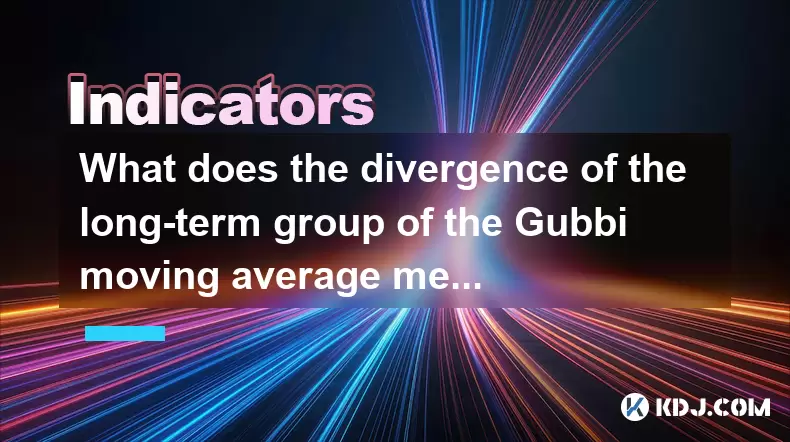
What does the divergence of the long-term group of the Gubbi moving average mean? How long can the trend last?
Jun 14,2025 at 02:56am
Understanding the Gubbi Moving AverageThe Gubbi moving average is a technical indicator used by traders in cryptocurrency markets to identify trends and potential reversals. Unlike traditional moving averages, the Gubbi variant incorporates unique calculations that emphasize price momentum and volatility adjustments. This makes it particularly useful fo...
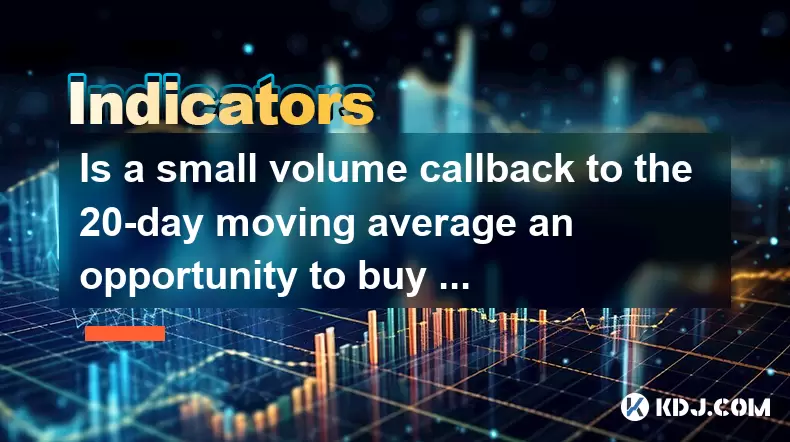
Is a small volume callback to the 20-day moving average an opportunity to buy low? What is the key to look at?
Jun 14,2025 at 02:28am
Understanding the 20-Day Moving Average in Cryptocurrency TradingIn cryptocurrency trading, the 20-day moving average (20DMA) is a commonly used technical indicator that helps traders assess the short-term trend of an asset. It calculates the average price of a cryptocurrency over the last 20 days and smooths out price volatility. When a coin experience...
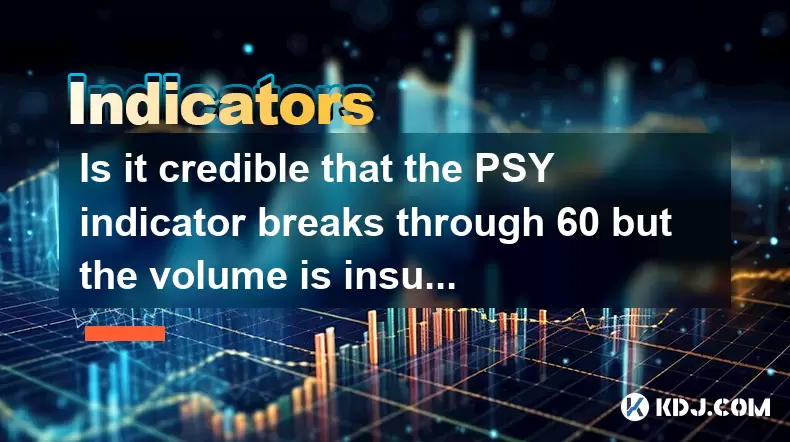
Is it credible that the PSY indicator breaks through 60 but the volume is insufficient?
Jun 14,2025 at 12:14am
Understanding the PSY Indicator in Cryptocurrency TradingThe Psychological Line (PSY) indicator is a momentum oscillator used primarily to measure the sentiment of traders and investors in financial markets, including the cryptocurrency space. It calculates the ratio of days where prices closed higher versus lower over a specified period, typically 12 o...
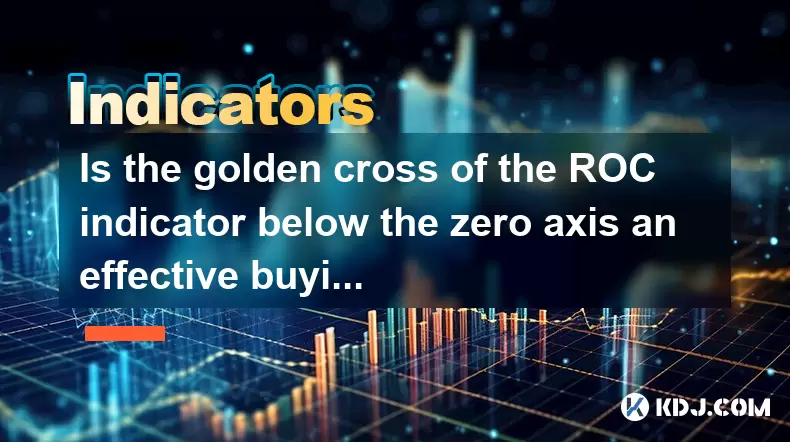
Is the golden cross of the ROC indicator below the zero axis an effective buying point?
Jun 14,2025 at 01:29am
Understanding the ROC Indicator and Its SignificanceThe Rate of Change (ROC) indicator is a momentum oscillator used in technical analysis to measure the percentage change in price between the current closing price and the closing price from a set number of periods ago. This tool helps traders assess the speed at which prices are changing, offering insi...

Is the sudden shortening of the MACD red column a signal of a peak? How to deal with it?
Jun 14,2025 at 06:01am
Understanding the MACD Indicator in Cryptocurrency TradingThe Moving Average Convergence Divergence (MACD) is one of the most widely used technical indicators among cryptocurrency traders. It helps identify potential trend reversals, momentum shifts, and entry or exit points. The MACD consists of three main components: the MACD line, the signal line, an...

Is it an opportunity for the long positive line with large volume to break through the platform and then shrink back?
Jun 14,2025 at 04:42am
Understanding the Long Positive Line with Large VolumeIn technical analysis, a long positive line refers to a candlestick pattern where the closing price is significantly higher than the opening price, often indicating strong buying pressure. When this occurs alongside large volume, it suggests that market participants are actively involved in pushing t...

What does the divergence of the long-term group of the Gubbi moving average mean? How long can the trend last?
Jun 14,2025 at 02:56am
Understanding the Gubbi Moving AverageThe Gubbi moving average is a technical indicator used by traders in cryptocurrency markets to identify trends and potential reversals. Unlike traditional moving averages, the Gubbi variant incorporates unique calculations that emphasize price momentum and volatility adjustments. This makes it particularly useful fo...

Is a small volume callback to the 20-day moving average an opportunity to buy low? What is the key to look at?
Jun 14,2025 at 02:28am
Understanding the 20-Day Moving Average in Cryptocurrency TradingIn cryptocurrency trading, the 20-day moving average (20DMA) is a commonly used technical indicator that helps traders assess the short-term trend of an asset. It calculates the average price of a cryptocurrency over the last 20 days and smooths out price volatility. When a coin experience...

Is it credible that the PSY indicator breaks through 60 but the volume is insufficient?
Jun 14,2025 at 12:14am
Understanding the PSY Indicator in Cryptocurrency TradingThe Psychological Line (PSY) indicator is a momentum oscillator used primarily to measure the sentiment of traders and investors in financial markets, including the cryptocurrency space. It calculates the ratio of days where prices closed higher versus lower over a specified period, typically 12 o...

Is the golden cross of the ROC indicator below the zero axis an effective buying point?
Jun 14,2025 at 01:29am
Understanding the ROC Indicator and Its SignificanceThe Rate of Change (ROC) indicator is a momentum oscillator used in technical analysis to measure the percentage change in price between the current closing price and the closing price from a set number of periods ago. This tool helps traders assess the speed at which prices are changing, offering insi...

Is the sudden shortening of the MACD red column a signal of a peak? How to deal with it?
Jun 14,2025 at 06:01am
Understanding the MACD Indicator in Cryptocurrency TradingThe Moving Average Convergence Divergence (MACD) is one of the most widely used technical indicators among cryptocurrency traders. It helps identify potential trend reversals, momentum shifts, and entry or exit points. The MACD consists of three main components: the MACD line, the signal line, an...
See all articles

























































































